#Lucas Velázquez
Explore tagged Tumblr posts
Text

Allegorical caprice. The Avarice (Eugenio Lucas Velázquez, 1852)
50 notes
·
View notes
Text

Arab Caravans Arriving at the Coast by Eugenio Lucas Velázquez.
Explore visual guides about art.
#painting#art#history#artwork#oil painting#realism#19th century art#art history#Eugenio Lucas Velázquez#spain#spanish art#arte#pintura#paisaje#landscape#landscape art#coast#spanish
9 notes
·
View notes
Text

Eugenio Lucas Velázquez - Exorcism.
35 notes
·
View notes
Text
Un suceso pocas veces contado
Un suceso pocas veces contado #aperturaintelectual #palabrasbajollave @tmoralesgarcia1 Thelma Morales García
#AperturaIntelectual#palabrasbajollaveAI#19 de octubre de 1811#Alejandro Ostoa#Arte#Aurelio J. Venegas#Carlos María de Bustamante#cerro del Calvario de Toluca#Cultura#Gustavo G. Velázquez y los recientes de Alexander Naime#Holocausto Toluqueño#Inocente Peñaloza#Isauro Manuel Garrido#Javier Romero Quiroz#Leopoldo Flores#Lucas Alamán#Miguel Salinas#Norberto López#Pedro Antonio Martínez#Periplo Plástico#Personajes#Pilar Iracheta#Plaza de los Mártires en Toluca#Poesía#Raymundo César Martínez#Thelma Morales García#Vicente Riva Palacio
2 notes
·
View notes
Text

Eugenio Lucas Velázquez, La suerte de varas, 1855 x
2 notes
·
View notes
Text

Condemned by the Inquisition by Eugenio Lucas Velázquez
1860
#apisceslearnsart#artblr#art#art blog#artists on tumblr#Eugenio Lucas Velázquez#Condemned by the Inquisition#1860#Madrid#Spain
1 note
·
View note
Text
01 Work, The Art of War, Eugenio Lucas Velázquez's The Ambush, with footnotes
Eugenio Lucas Velázquez (1817–1870)The Ambush, c.1850–1870Oil on metalH 35.5 x W 50.8 cmBirmingham Museums Trust The theme of travellers waylaid by bandits was a common one in the eighteenth and early nineteenth century painting as the Napoleonic wars brought chaos and lawlessness to many parts of Europe. Criminals, deserters and the remnants of defeated armies often turned to highway robbery as…
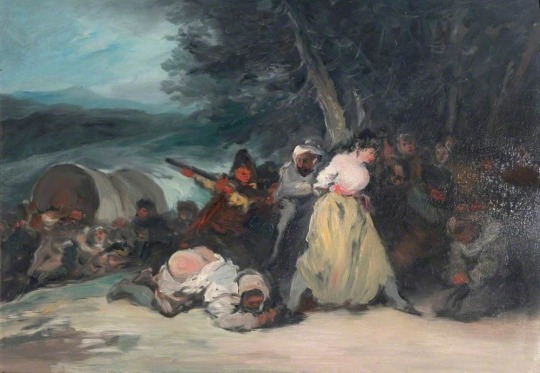
View On WordPress
#Arthistory#Artists#Biography#Eugenio Lucas Velázquez#fineart#footnotes#History#Paintings#war#Zaidan
0 notes
Text

Lucas Velázquez
19 notes
·
View notes
Text
The THIEF's song (La Cançó del Lladre)
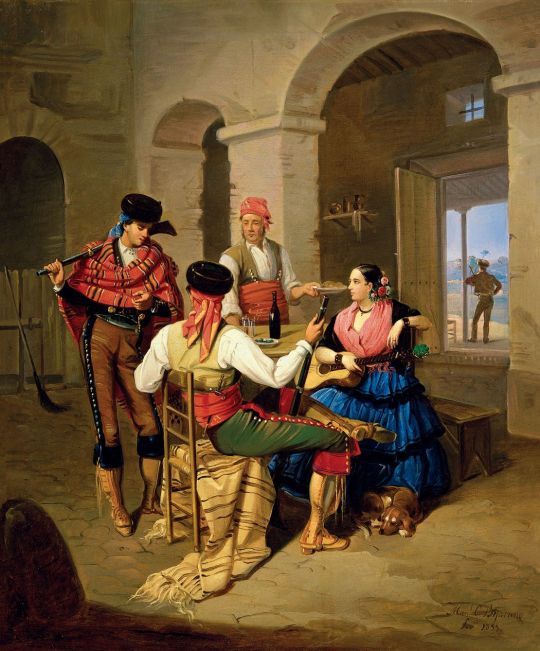
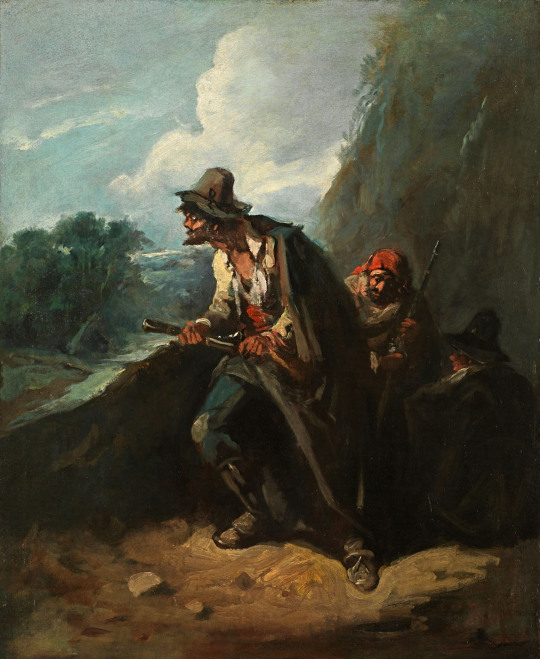

Manuel Cabral y Aguado Bejarano. Escena de una venta. 1855. | Eugenio Lucas Velázquez. Bandoleros. circa 1860. | Manuel Barrón y Carrillo. Emboscada a unos bandoleros en la cueva del Gato. 1869. [x]
"La Cançó del Lladre is a popular 18th century Catalan melody, from a tradition known as Canciones de Bandoleros: bandit songs. The bandoleros at that time were people who challenged the established social, political, and economic order, engaging in banditry in an era when divisions between social classes were very pronounced. They stole from the upper classes sometimes to give to the poor, and sometimes simply to protest against the system, which precluded social mobility and did not allow people to escape poverty and labour exploitation.
This song's lyrics are told in the first person by a thief who is sentenced to death after a lifetime of robbery and crime. Through each stanza he recounts his misdeeds, every robbery he committed, and despite everything, this song is in a major key. And in a way it is joyful. With the lyrics starting from the thief's childhood, it broadcasts that despite all he went through, he lived his life fully and he was happy. The chorus, which says "Adéu, clavell morenet, Adéu, estrella del dia", meaning "Goodbye, dark-coloured carnation, goodbye, star of the day", is a kind of farewell to life, and to that energy that made him feel alive."
— Paola Hermosín
youtube
The Thief's Song
(translation from lyricstranslate.com)
When I was a little boy I was boastful and presumptuous; White espadrilles on my feet And a handkerchief in my pocket.
Goodbye, golden carnation! Goodbye, day star!
And now that I am all grown up, I have chosen an evil path! I have started to rob people: (This is) my daily job.
Goodbye, golden carnation! Goodbye, day star!
I robbed a merchant Who was returning from the town fair; I stole all of his money And the sample he was carrying.
Goodbye, golden carnation! Goodbye, day star!
Once I had enough money I have kidnapped a young maiden: I have taken her with lies, Promising that I'd marry her!
Goodbye, golden carnation! Goodbye, day star!
The law has imprisoned me And it has dragged me to a dark jail. The law has imprisoned me And it shall make me pay with my life!
Goodbye, golden carnation! Goodbye, day star!
Original Catalan lyrics after the cut:
La Cançó del Lladre
Quan jo n'era petitet festejava i presumia, espardenya blanca al peu i mocador a la falsia.
Adéu, clavell morenet! Adéu, estrella del dia!
I ara, que ne sóc grandet, m'he posat a mala vida! En sóc posat, a robar: ofici de cada dia.
Adéu, clavell morenet! Adéu, estrella del dia!
Vaig trobar un traginer qui venia de la fira: li prenguí tots els diners i la mostra que duïa.
Adéu, clavell morenet! Adéu, estrella del dia!
Quan he tingut prou diners, n'hi he robat també una nina: l'he robada amb falsedat, dient que m'hi casaria!
Adéu, clavell morenet! Adéu, estrella del dia!
La justícia m'ha pres i a presó fosca em duïa. La justícia m'ha pres i em farà pagar amb la vida!
Adéu, clavell morenet! Adéu, estrella del dia!
#La Cançó del Lladre#La Canción del Ladrón#Paola Hermosín#The Thief's song#prison ballads#folk#catalonia#spain#bandit#bandolero#theory#swinging from the gallows tree#art#the Rogue school of translation gives exactly zero fucks#(not the song just the intro)
23 notes
·
View notes
Text



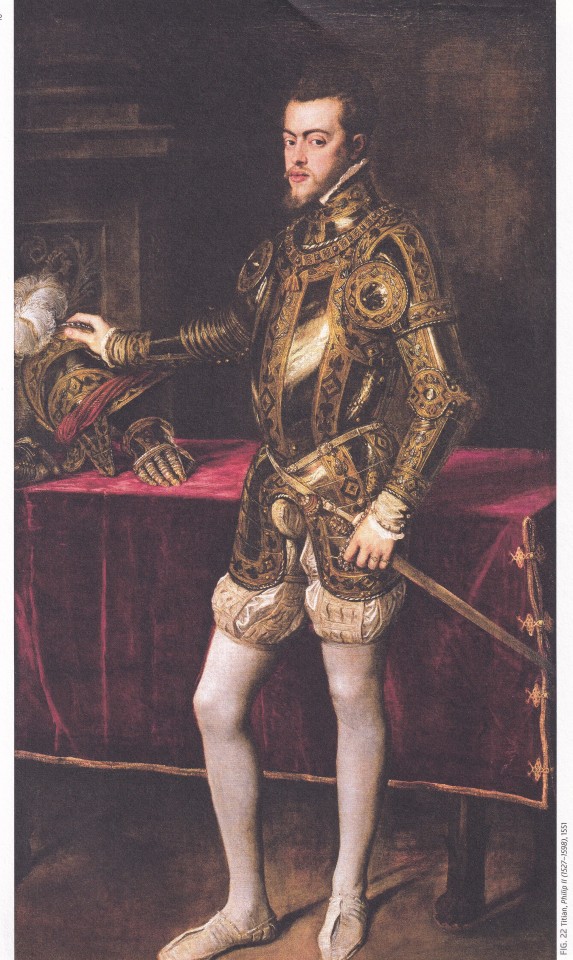

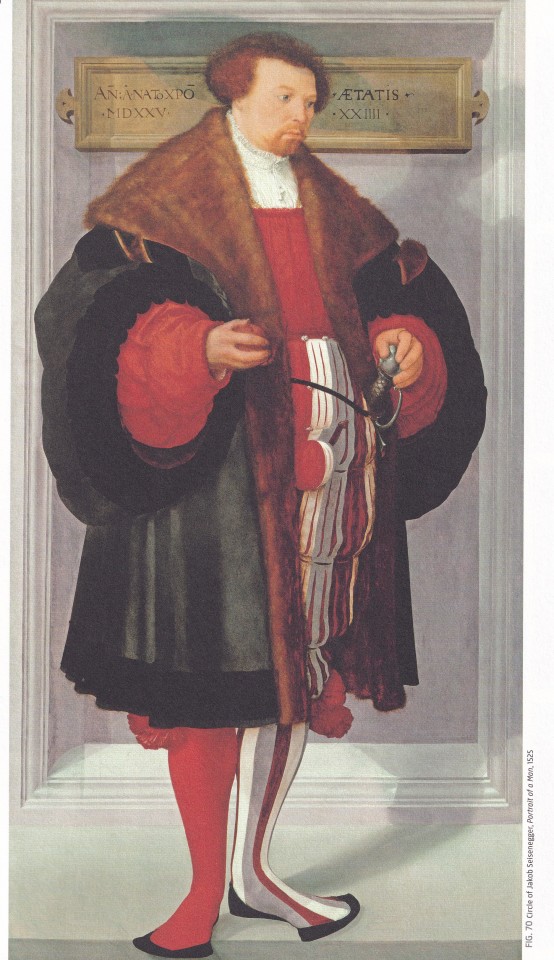
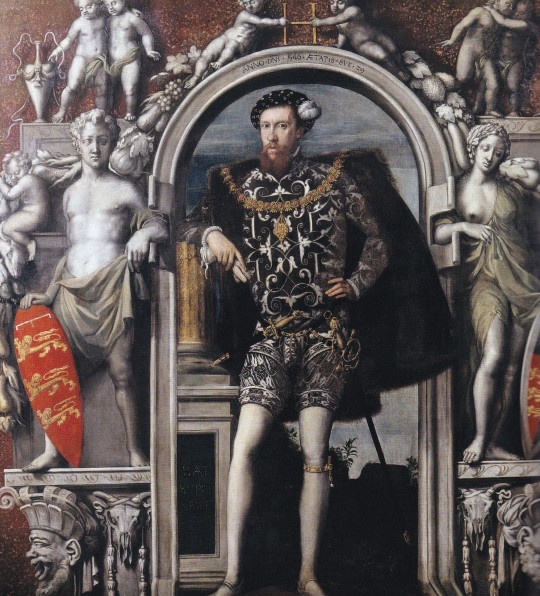

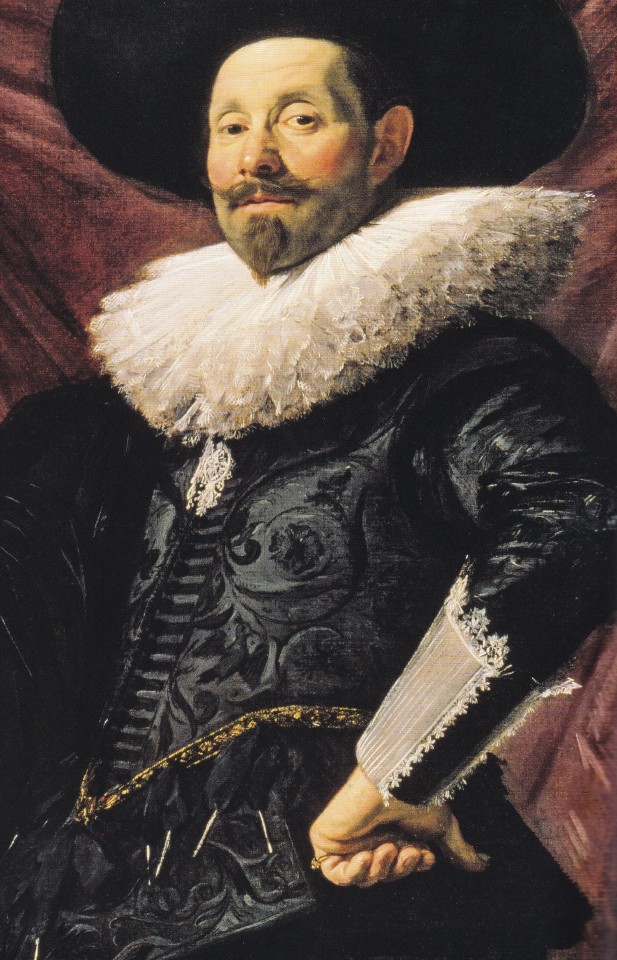



High Society
Johnatan Bilker
Rijksmuseum, Amsterdam 2018, 136 pages, 22x30cm, ISBN 9789462084261
euro 60,00
email if you want to buy [email protected]
Exceptional life-size portraiture by great masters such as Claude Monet, Edvard Munch, Rembrandt and Velázquez
The Rijksmuseum is celebrating the completed restoration of Rembrandt's magnificent portraits of the exuberantly dressed Marten Soolmans and Oopjen Coppit with a comprehensive publication (and accompanying exhibition) dedicated to life-size portraiture. Over the centuries, powerful monarchs, eccentric aristocrats and rich burghers commissioned portraits of themselves arrayed in all their finery and preferably life-size, from the world's most famous painters. This book presents exceptional life-size portraits by great masters, including Lucas Cranach the Elder, Anthony van Dyck, Frans Hals, Claude Monet, Edvard Munch, Rembrandt and Velázquez. In an essay, Rijksmuseum curator Jonathan Bikker describes the history, form and function of these portraits and recounts biographical details and lots of juicy gossip about the sitters. Also included are the splendid portraits of Marten Soolmans and Oopjen Coppit that were recently acquired by the Rijksmuseum and the Louvre.
30/04/24
#High society#art exhibition catalogue#Rijksmuseum Amsterdam 2018#Monet#Munch#rembrandt#Velazquez#art books#fashionbooksmilano
12 notes
·
View notes
Text

Lucas Velázquez (1817–1870)
Allegorical caprice. The Avarice
20 notes
·
View notes
Text

'Allegorical caprice. The Avarice'. Eugenio Lucas Velázquez. 1852.
21 notes
·
View notes
Text
Una pinacoteca en la catedral

De mi paseo por Toledo el 15 de mayo de 2024.
El cuadro central que aparece en la imagen que comparto es "El Expolio", y fue el primer trabajo por encargo que realizó El Greco en Toledo. La pintura fue restaurada hace una década en el Museo del Prado y devuelta a su lugar de origen en excelente estado.
El lienzo se encuentra situado en el Altar Mayor de la Sacristía de la Catedral de Toledo, en cuya bóveda también aparece un enorme fresco de Lucas Jordán. En la misma sala del altar podemos ver más trabajos de El Greco, como "San José y el Niño", "Cristo en la Cruz" o "San Francisco y el Hermano León" (mi preferido), además de otros cuadros de menor tamaño, como los dos que aparecen en la fotografía.
El resto de las obras de esta pinacoteca de la catedral se completa con pinturas de Velázquez, Goya, Tiziano, Rafael, Van Dyck y Caravaggio.
Como curiosidad, el retablo de la parte inferior de la fotografía es también una pieza escultórica del pintor cretense.
5 notes
·
View notes
Text
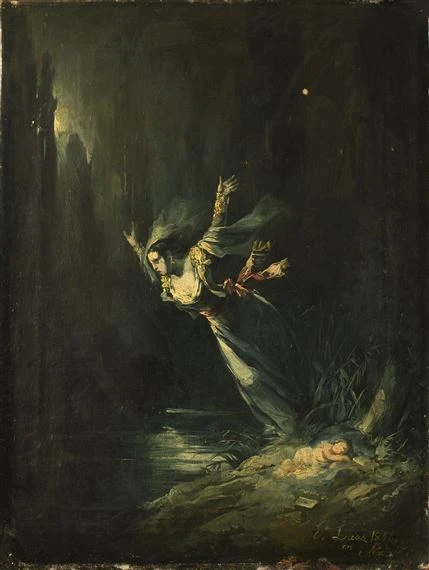
Eugenio Lucas y Velázquez - Allegory of life and death, 1856.
#Eugenio Lucas y Velázquez#Allegory of life and death#dead#death#suicides#on the edge#jumping#falling
16 notes
·
View notes
Photo

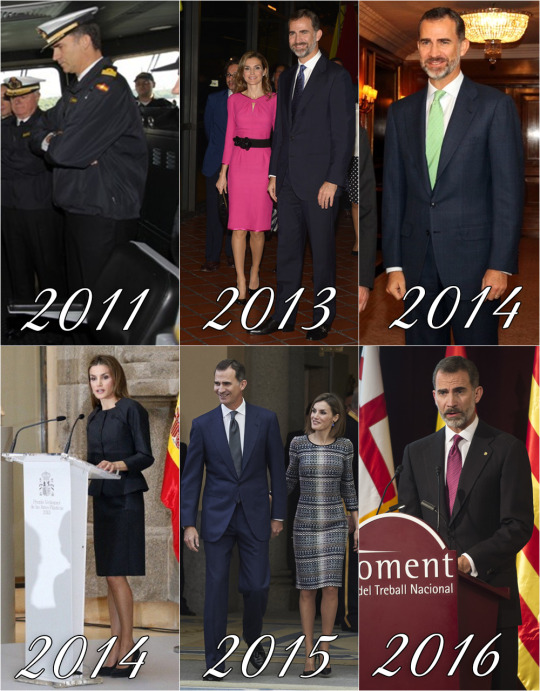

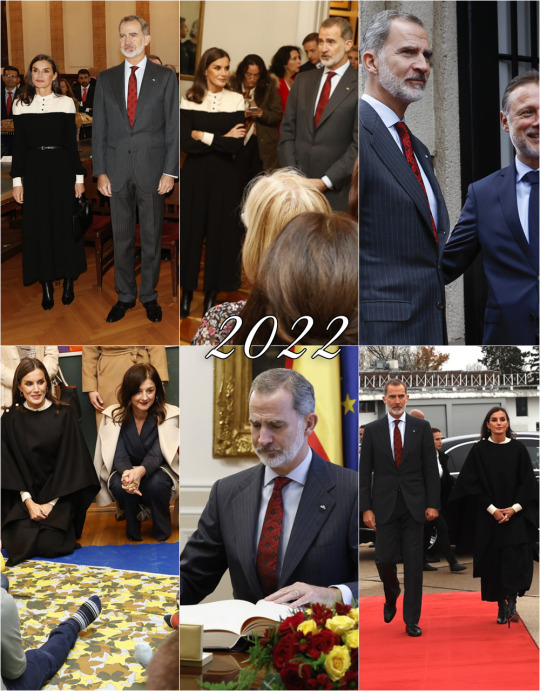
Felipe and Letizia retrospective: November 17th
2003: Opening of the Sefardi Museum in Toledo at Sinagoga del Transito in Toledo.
2004: Audience with the Board of Trustees of the Madrid 2012 Foundation & 50th anniversary of the Professional Economists Council at Economists College Office.
2009: 26th Francisco Cerecedo journalism award dinner.
2010: Audiences at la Zarzuela & “Francisco Cerecedo Awards 2010”.
2011: Visited the ship LHD “Juan Carlos I”
2013: Miami Book Fair International 2013 Inaugural event in Miami, Florida, USA.
2014: Velázquez Awards for the Fine Arts 2013 & Audience with Professor Rolf-Dieter Heuer, Director General of CERN
2015: National Sports Awards 2014 at El Pardo Palace in Madrid
2016: Opening of the twelfth legislature at the Spanish Parliament in Madrid (1, 2, 3) & Carles Ferrer Salat Awards and Foment del Treball Honor Medals.
2020: Work meeting with UNICEF Spain; COTEC Foundation’s board meeting & Audience with Luca de Meo, Renault’s CEO and José Vicente de los Mozos
2021: 14th Cotec Europa meeting
2022: Official Visit to Croatia, day 2
F&L Through the Years: 1085/??
#King Felipe#Queen Letizia#Princess Leonor#Infanta Sofia#King Felipe of Spain#Queen Letizia of Spain#Princess Leonor of Asturias#Infanta Sofia of Spain#King Felipe VI#Princess of Asturias#King Felipe VI of Spain#F&L Through the Years#November17
6 notes
·
View notes